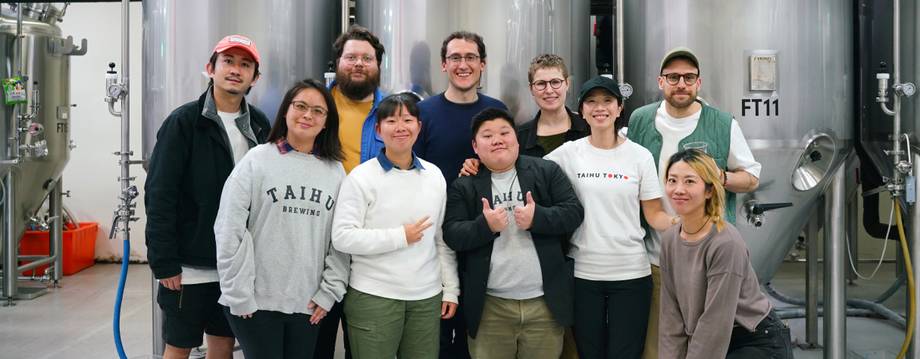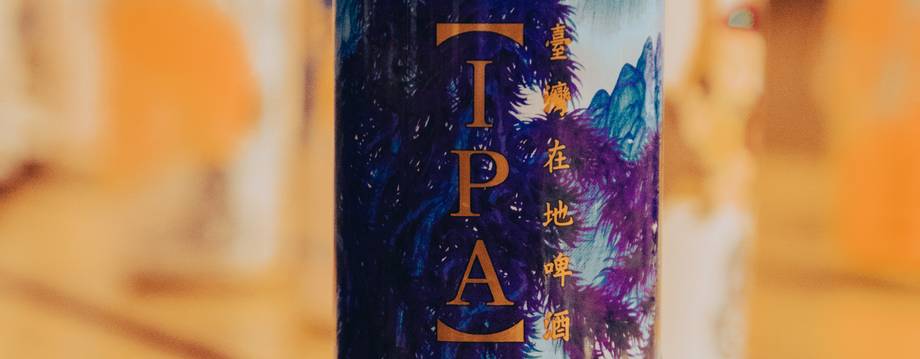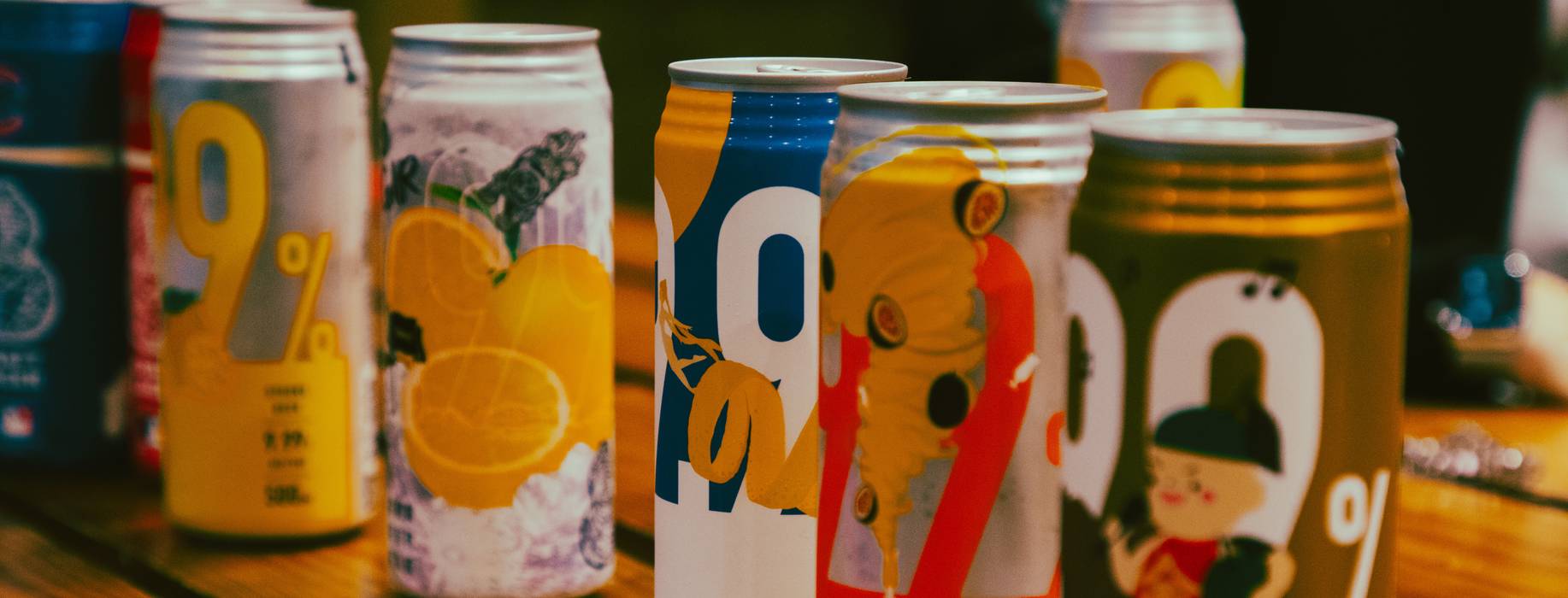Beer with heart
Head brewer at Taihu Brewing and the chairlady of the Taiwan Brewers Association, Winnie Hsu is pushing for a better craft future for the nation
Robyn Gilmour
Photos:
Doug Wilson Garry
Saturday 31 May 2025

This article is from
Taiwan
issue 118
Share this article
It’s rare that I meet someone for the first time, and instantly know that I would pick them up from the airport. I don’t suspect Winnie Hsu would need it, as she doesn't seem short of people who would do the same. The team at Taihu Brewing orbits around their head brewer, creating a feeling not only that they are dedicated to her, but that she does her best for them. The atmosphere is one of mutual respect more than hierarchy, though it's clear she feels responsible to and for her colleagues.
“That’s how we feed 200 employees,” she says, only half joking, when referring to the eight bars that Taihu owns, as well as the expansive network of venues it supplies, and off-trade retailers it stocks. Though we’re seated in the charming taproom adjacent to Taihu’s pilot brewery, a sizable production facility is just a ten-minute walk away. Bristling with 200hl tanks and operating through the night, it’s the biggest craft brewery in Taiwan.
Winnie started brewing when she was employed by Gordon Biersch, an American brewery and restaurant chain that expanded into Taiwan in 2008. She trained and worked in the States before returning to Taiwan, where she brewed for the company until COVID shrunk operations there. While Gordon Biersch never had its own brewery in Taiwan, it contract brewed at Sunmai, which is how Winnie met Marcie Chan (see Sunmai article).
All craft breweries around Taipei have their own distinct styles and approach to production. There’s little overlap in specialisms, apart from when it comes to one key trend; they’re all brewing for the weather. Taiwanese craft beer tends to be either slightly lighter or slightly sweeter than we’re used to in the UK, with both approaches attempting to tackle the intense heat of summer. In July, 81% humidity is common, and temperatures tend to sit around 35°C. For many, a full-bodied and bitter IPA — a beer engineered to be morish and not particularly thirst quenching — isn’t always enjoyable in such heat, or tends to be a beer you can drink one or two of before switching to something lighter.

Winnie Hsu, head brewer at Taihu Brewing and the chairlady of the Taiwan Brewers Association
As such, some breweries, like Sunmai, also make canned cocktails and kombucha while others, like Ugly Half, do a hopped cider. Taihu’s bet against the weather is to keep its beer’s residual sugar comparatively low, and heavily flavour its beer with fruit where it feels appropriate. Where other breweries dip their toe into other categories of beverage, Taihu sticks to beer but has developed a number of different ranges with very distinct styles and brand identities. This, Winnie says, is to try to engage with as broad a church of consumers as possible.
For example, Taihu’s 9.99 range uses US05 yeast to brew a very neutral beer to 10% ABV (or 9.99% to be precise), then adds an enzyme that consumes all remaining residual sugar before finally adding hops and fruit juice to flavour the beer. Winnie says the inspiration for the first beer in the 9.99 range was a Long Island Iced Tea. Taihu’s many bars are all staffed by excellent bartenders, but Winnie says that one in particular is especially talented, and so she tasked him with making a beer cocktail.
He made a Long Island, but instead of adding a splash of cola at the end, used Taihu’s IPA. Winnie says it was delicious, but also reminded her of a time long before she started brewing when she bartended. “Anyone who ordered a Long Island wanted to get drunk,” she says, which was the final piece in the puzzle that became the 9.99 range; a selection of beers — made using malt, hops, water and yeast — but which tasted like a cocktail and were all high-ABV.
These beers are dangerous; as refreshing as a fruit juice, it would be easy to crush several of them in a couple of hours, something Winnie once experimented with herself. “I think it was the first time I ever blacked out,” she says. “We had a staff party that started at 7pm and I think I had to go home at 8:30.”

Ferment team with Taihu Brewing | PHOTO: John Hsieh
The 9.99 range isn’t high-ABV just for the sake of it. Winnie says it’s hard to convince consumers to spend money on beer, and while Taihu still uses the best ingredients, “quality” isn’t a talking point for the average beer drinker with whom Taihu is trying to engage. “I don't really want to use the word ‘craft’ too much, because it makes people think about something more high-end or expensive that you might get in a cafe or cool bar,” says Winnie. “I don’t want to be like that, so we try to make our products easy to approach.”
She goes on to point out that beer is cheap in Taiwan. When the country joined the WTO in 2002, the government had to relinquish anti-competition laws over alcohol and tobacco production, but that didn’t mean it had to stop brewing entirely. The biggest brewery in Taiwan, Taiwan Beer, is still run by the government. Pre-pandemic, Heineken also set up a brewery in Taiwan, and held about 20% of the market share. These entities can produce and sell beer for less than a US dollar, but even cheaper still is beer imported from China.
As such, Winnie says that if you’re looking at a supermarket shelf and see beer from Taiwan Beer for $1, and beer from Taihu for $3, there needs to be something special about the $3 beer. The 9.99 range is therefore all about bang for your buck. With time, she hopes a beer’s selling point can become more about where, how or with what it is brewed, but for now, the challenge is just to get people to spend a little more than they’re used to.

Winnie has a better overview than most when it comes to craft beer in Taiwan. In 2022, to mark 20 years since Taiwan joined the WTO, she founded the Taiwan Brewers Association. She had a feeling that tax on alcohol in Taiwan was unfair, with macro and microbreweries being subject to the same regulations. Acknowledging that there’s strength in numbers, but that the time and resources of many breweries were funneled into survival, Winnie set the association up as a body that could lobby the government on behalf of all 35 members; 20 breweries and 15 contract brands.
Recently she’s been trying to incorporate information exchange into the structure of the association, hosting an educational talk on hops last year, which was attended by Sierra Nevada, and planning a sensory panel this year. However, she says the uptake on these events could use improvement. Like Doug and Spencer at Redpoint, she notes that a lot of Taiwanese craft breweries, while friendly and willing to help each other, tend to do their own thing, which isn’t conducive to the strong community needed to do some of the more fun stuff. She’d love to see a Taiwanese craft beer festival take place, and for there to be more events that engage with the public, but she can’t make this happen single-handedly, while also steering the ship at Taihu. That said, if anyone can engender enthusiasm, remind people of why the brewing industry is worth fighting for, and reignite their love of craft, it’s Winnie. She certainly did for me.
Share this article

